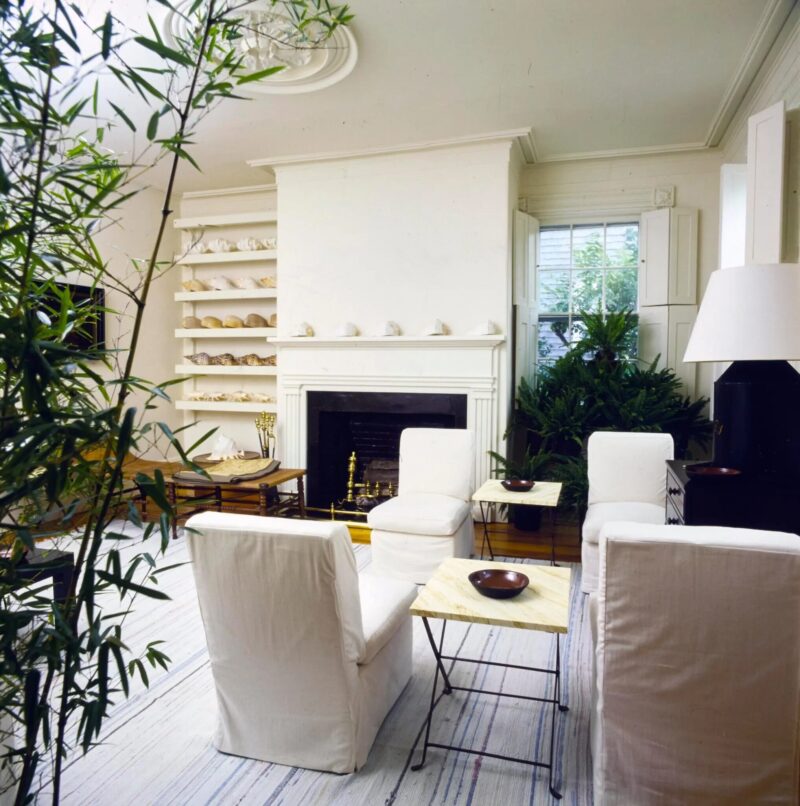How do we define furniture? It might seem like a silly question, but it’s one that kept coming up in October of last year, when, in a conference room on the 15th floor of The New York Times building, six experts — the architects and interior designers Rafael de Cárdenas and Daniel Romualdez; the Museum of Modern Art’s senior curator of architecture and design, Paola Antonelli; the actress and avid furniture collector Julianne Moore; the artist and sculptor Katie Stout; and T’s design and interiors director, Tom Delavan — gathered for nearly three hours to make a list of the most influential chairs, sofas and tables, as well as some less obvious household objects, from the past century.
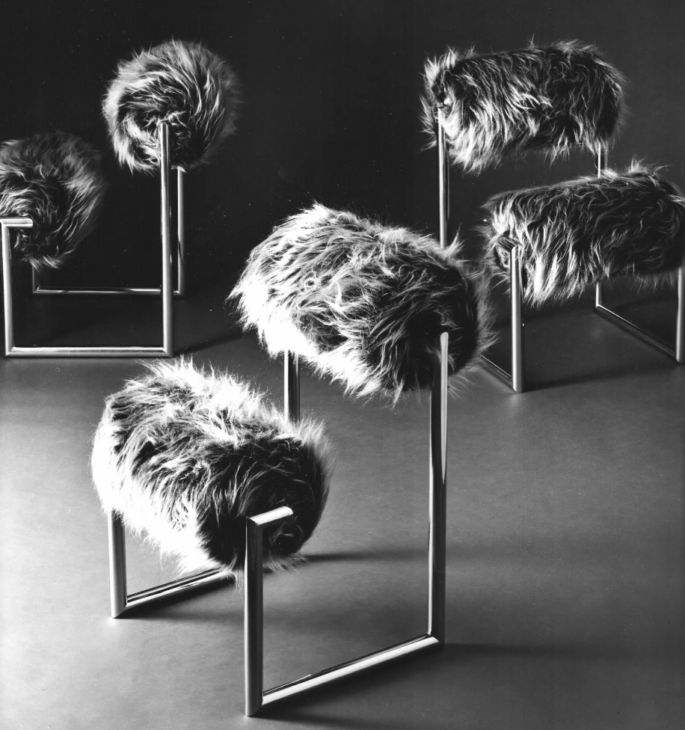
Nanda Vigo’s Due Più chair consists of just two cylinders — one a seat, the other a backrest — often upholstered in Mongolian sheepskin fur. Credit…© Aldo Ballo, courtesy of Archivio Nanda Vigo, Milan
The goal was to land on a wide range of offerings, but there were parameters: To qualify, each piece was required to have been fabricated, even if just as a prototype, within the past 100 years. It also needed to be at least slightly functional.
(The Japanese architect Oki Sato’s 2007 Cabbage chair, a treatise on sustainability constructed entirely from a roll of disused paper, isn’t the sturdiest place to sit; nonetheless, it was nominated.) Lighting was excluded from the debate — “which is nuts,” said de Cárdenas, a former men’s wear designer who started his firm in 2006 — unless it was attached to, say, a desk. (The Italian architect and designer Ettore Sottsass’s illuminated Ultrafragola mirror, which presaged selfie culture by decades, made the cut.) There were no limits placed on provenance, and a piece didn’t need to have been designed by a known name, or even attributable. The jurors were determined to avoid what Antonelli described as “the usual collectors’ items by white German, French and Italian males with a smattering of women, no Latin American or Black — and very little Asian — representation.” While the final list, presented below in roughly the order it was discussed, and not reflecting any kind of hierarchy, does include an icon or two (to omit Charles and Ray Eames or Le Corbusier, the group decided, would be a mistake), diversity of maker (and of materials, styles, processes and prices) was a consideration.
In each case, the objects represented more than comfort or utility; every innovation is, in its own way, a historical artifact — a response to the prosperity or unrest into which it was born or a proposal for a more efficient world, maybe a better one.
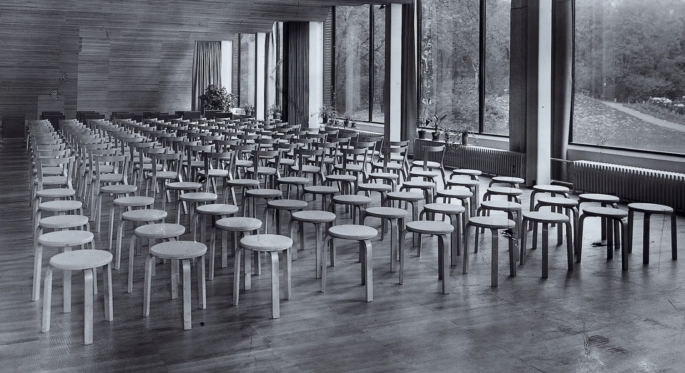
The auditorium at the Viipuri Library in Vyborg, Russia, designed and built by Aalto between 1927 and 1935.Credit…© Alvar Aalto Museum, Artek Collection. Photo: Welin
The participants were asked to submit a list of 10 suggestions beforehand, revealing their own unique tastes and interests. Stout, who curated a show in 2020 with the Shaker Museum in Chatham, N.Y., argued that a bonnet is a slipcover for the head and should count as furniture. (She was voted down.) Moore, an avowed minimalist, petitioned to include austere creations in marble or wood by Poul Kjaerholm and Donald Judd. Romualdez’s more classical choices — among them a daybed by the mid-20th-century French designer Marc du Plantier and a patinated bronze table by the Swiss sculptor Diego Giacometti from the 1980s — were influenced by the luxurious interiors he saw in American magazines while growing up in Manila in the Philippines, long before he’d work for the architects Thierry Despont and Robert A.M. Stern and later open a firm of his own.
As Delavan said, “Daniel’s were the chicest. Julianne’s were the purest. Katie’s were the wackiest. Rafael’s were the campiest. And mine were the dullest.”
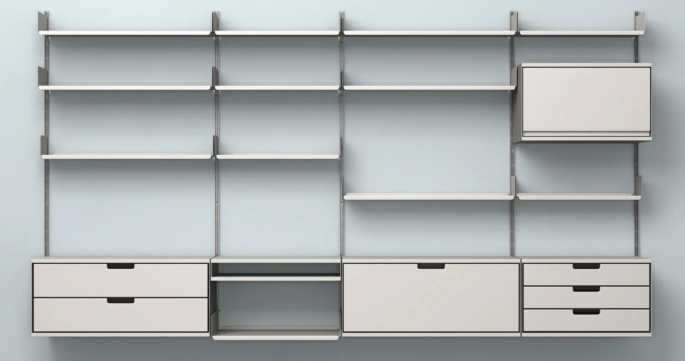
Dieter Rams’s 606 Universal Shelving System for Vitsoe.Credit…© Vitsoe
Antonelli’s were, perhaps, the most comprehensive: She created three separate lists to accommodate her top picks, runners-up and wild cards. “I just want us to express an idea of design that excites the world,” she said. As the members of the group settled into the room’s upholstered cantilever chairs — imitations of a Bauhaus style popularized in the 1920s by the Hungarian German Modernist Marcel Breuer — they nodded and offered words of encouragement. And then they got down to business. — Nick Haramis
1. Piero Gatti, Cesare Paolini and Franco Teodoro, Sacco Chair, 1968
Considered the original beanbag, the Sacco chair is the rare design object to become an instant classic in both rec rooms and museum collections. It was included in MoMA’s seminal 1972 show “Italy: The New Domestic Landscape,” which presented furnishings that looked beyond aesthetics and function and toward sociocultural shifts, including the rejection of bourgeois propriety. “Imagine trying to be stuffy while slouching in a beanbag chair,” said the show’s curator, the architect and industrial designer Emilio Ambasz.
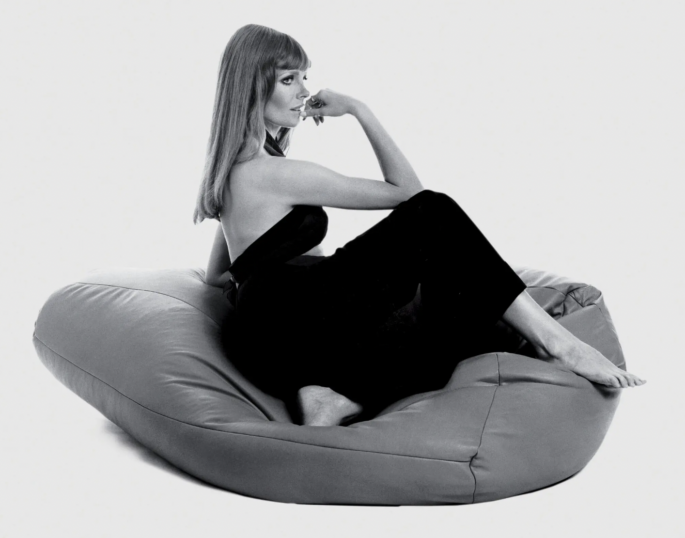
A classic 1968 version, featuring a leather shell filled with polystyrene beads.Credit…Courtesy of Zanotta SpA – Italy
Indeed, the vaguely pear-shaped blob of stitched vinyl filled with polystyrene beads — the transparent prototype was partially inspired by piles of snow — molded to the body of the sitter and encouraged lounging of the highest order; the hard part was getting out of it.
Now that we better understand the environmental impact of polystyrene, the Italian furniture company Zanotta, which has produced the piece from the start and continues to call it the “anatomical easy-chair,” has experimented with a version stuffed with bioplastic derived from sugar cane. — Kate Guadagnino.
2. Le Corbusier, LC14 Tabouret Cabanon, 1952
Some of the best design originates at home. A great example is the LC14 Tabouret Cabanon, which the Swiss-born French architect Charles-Édouard Jeanneret, known as Le Corbusier, built for his cabin in Roquebrune-Cap-Martin, a vacation shack that he designed (reportedly in 45 minutes) on the French Riviera. At roughly 160 square feet, the residence was almost monastic, with most of the furniture built in. Made of wood — the Cabanon is chestnut, though other iterations come in oak — they were inspired by a whiskey crate the architect found on the beach, with dovetail joints and oblong holes in the sides for lifting. Prefiguring both modular furniture and the nothing-to-hide sensibility of industrial décor, they serve as rustic altars to the right angle, about which Le Corbusier once wrote, “Simple and naked / yet knowable. … It is the answer and the guide.” — Rose Courteau
An exercise in pure functionality, the boxes can be used as chairs, side tables and storage.
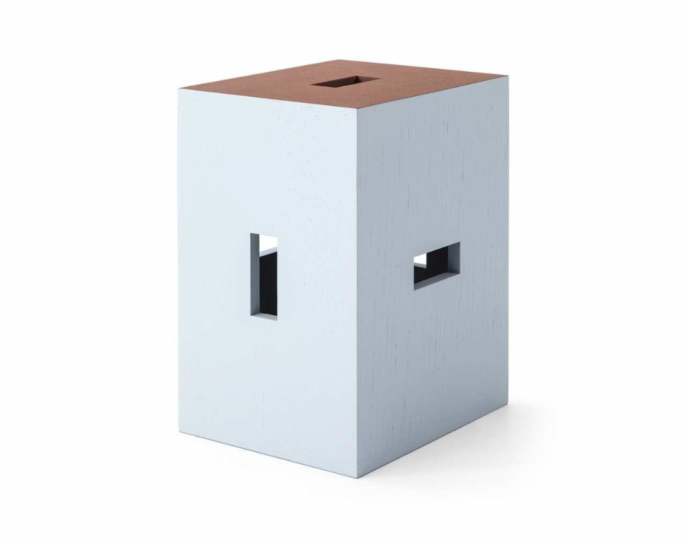
Le Corbusier LC14 Cabanon Wood Stool for Cassina, Italy, $1860, 1stdibs.com
3. Le Corbusier, Pierre Jeanneret and Charlotte Perriand; Chaise Longue à Réglage Continu; 1928
In 1929, Le Corbusier, along with his cousin Pierre Jeanneret and their colleague and fellow architect and designer Charlotte Perriand, created a Modernist interior for the Salon d’Automne art exhibition in Paris. In a sly rejection of the enameled embellishments of Art Deco, the prevailing style of the time, they presented concealed lights, glass-topped tables, mirrored cabinets and seating featuring tubular steel, including the lissome Chaise Longue à Réglage Continu, which they’d first produced and placed the previous year in a villa just outside of Paris. With an H-shaped, bicolor-steel base cradling chromed tubes that followed the form of a supine human body — dipping to accommodate the hips and cresting to support the knees — it was among the first ergonomically conscious pieces of furniture ever manufactured. The frame, which could be adjusted to change the angle of repose, held a slim, black fur mattress with a cylindrical headrest. Far too radical for its time and expensive to fabricate, the piece languished for decades but emerged as a coveted emblem of Modernism when Cassina started producing it in 1965. Le Corbusier, who held functionality in high esteem, is famous for saying that a house is a machine for living. It’s no surprise, then, that he considered this chaise longue a machine for resting. His biographer Charles Jencks had another take:
“It is as if the body is being propped up on fingertips like a precious jewel.”
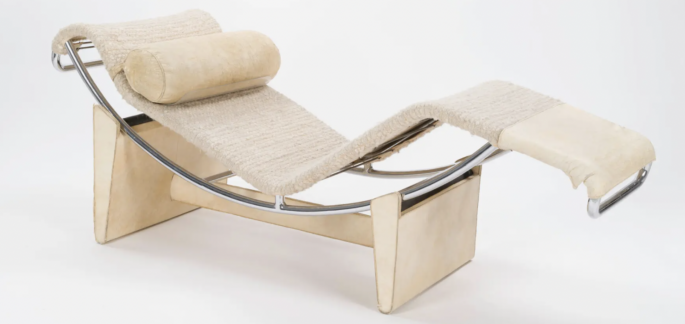
A 1929 version of the chair.Credit…Carnegie Museum of Art, Pittsburgh/Art Resource, NY © ARS, NY
4. George Nakashima, Slab I Coffee Table, Circa 1950
These days, live-edge furniture — fashioned from a slice of a log with at least one side left ruggedly intact — seems to be everywhere. Each piece owes a debt to the raw splendor of George Nakashima’s original slab coffee tables. Nakashima, who was born in Spokane, Wash., to Japanese immigrant parents, established himself as a furniture designer before being imprisoned with his family at the Minidoka internment camp in Idaho during World War II. While there, he further refined his woodworking skills under the tutelage of a fellow internee, the master carpenter Gentaro Kenneth Hikogawa. After Nakashima’s release in 1943, he settled in New Hope, Pa., where he established his own studio and made furniture for Knoll. Believing that his work gave trees a second life, he fused the austere solidity of Shaker furniture with the Japanese concepts of wabi, sabi and shibui — emphasizing age and simplicity. This bundle of ideals was best expressed in the Slab table, with a top made from a single slice of American black walnut or cherry, occasionally accented with functional elements like a stabilizing butterfly joint. Instead of excising the irregularities and imperfections, Nakashima chose to highlight them, a radical approach at the time.
Each table was unique to the tree and the woodworker who handled it.
The furniture designer enshrined sensitivity, not domination, as the key to sublime design, in contrast to the ornate embellishments of Art Deco and the factory aesthetics of the postwar era, which embraced machinery as a human triumph. — R.C.
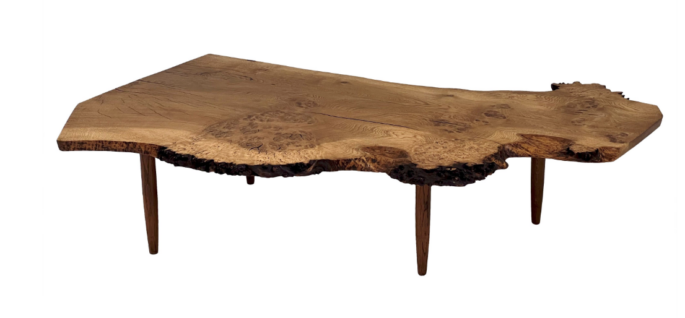
Mira Nakashima Live Edge Coffee Table, $57000, 1stdibs.com
5. Bill Stumpf, Ergon Chair, 1976
The ancient Greeks made chairs with curved backrests, but it wasn’t until the 1970s that ergonomics, the study of people in their workplace undertaken to improve efficiency and welfare, was heartily embraced by industrial designers. That’s when Herman Miller brought on the American designer Bill Stumpf, who’d worked with medical experts while doing postgraduate research at the University of Wisconsin to conduct studies on ideal sitting posture that incorporated X-rays and time-lapse photography. In 1976, the year that word processing became available on microcomputers, Stumpf came up with the swiveling Ergon office chair, constructed with pillowy pieces of fabric-covered foam (one for the back and another for the bottom), which could be wheeled in any direction.
The chair also had gas-lift levers that controlled height and tilt — good news for women, who were joining the work force in record numbers, and whose comfort had been ignored by earlier designers.
But Stumpf didn’t stop there; in collaboration with the Los Angeles-born Don Chadwick, he went on to debut 1994’s Aeron chair, which featured a higher backrest covered in a flexible textile called pellicle. It remains, with a tweak or two, one of those pieces that’s so ubiquitous you’re not likely to notice or think about it. That is, until a co-worker nabs yours. — K.G.
6. Gae Aulenti, Table With Wheels, 1980
The “High Tech” moment in design started in the early 1970s, as more and more New York City artists were moving into lofts in SoHo’s abandoned cast-iron buildings and furnishing them with functional pieces picked up at hospitals, offices, warehouses and restaurant supply stores. In these open-plan homes and those that aspired to be like them, you were likely to find white walls, exposed pipes, track lighting, Metro Super Erecta wire shelving and stainless-steel commercial refrigerators. In 1980, at the tail-end of that era, the Italian architect and designer Gae Aulenti introduced Table With Wheels, a thick pane of beveled glass mounted on large rubber casters that she intended to resemble the wooden trolleys used to cart heavy pieces around the factory of Milan’s FontanaArte design studio, where she served as art director. The table had the playfulness and poeticism of a Marcel Duchamp readymade, and it presaged glass as one of the decade’s trendy materials for interiors — one seen increasingly throughout the 1980s in the form of smooth reflective surfaces and chunky, semitransparent blocks. In 1993, Aulenti riffed on her design, releasing Tour, an updated model with bicycle wheels. — K.G.
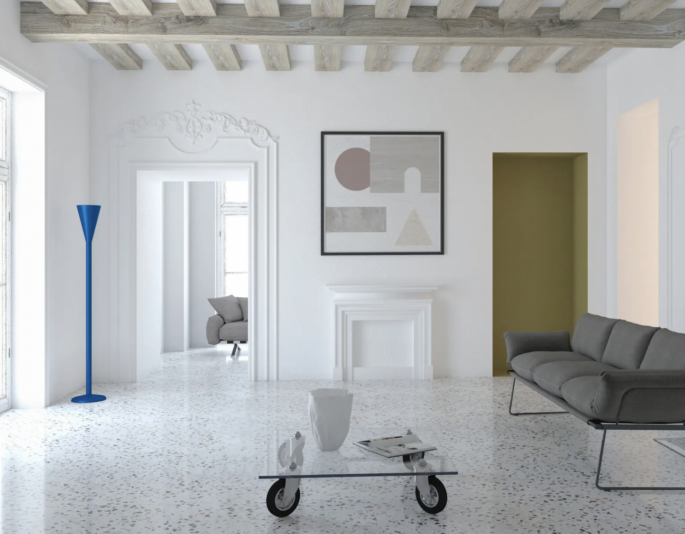
Table With Wheels was at the vanguard of the 1980s trend for glass as a décor element.
7. Dieter Rams, 606 Universal Shelving System, 1960
The German functionalist Dieter Rams didn’t invent modular design, but as the creator of the 606 Universal Shelving System for Vitsoe, he can be credited as one of its early perfecters. The system’s construction is strikingly simple, with aluminum E-Tracks mounted to walls from which shelves, cabinets and even tables can be hung using no-equipment-required pins. Adjustable and customizable, it can be adapted to a wide range of spaces, needs and aesthetics. (When they’re full, the wafer-thin but deceptively strong shelves, made of powder-coated, laser-cut steel, nearly disappear.) The unit embodies all 10 of the design principles that Rams, an early advocate of environmental sustainability, formulated in the 1970s (No. 1: “Good design is innovative”; No. 5: “Good design is unobtrusive”), but the real reason it’s been revered for decades may be its incomparable durability (No. 7: “Good design is long-lasting”). Parts purchased today can be used interchangeably with those from 1960, when the shelving first went into production. — R.C.
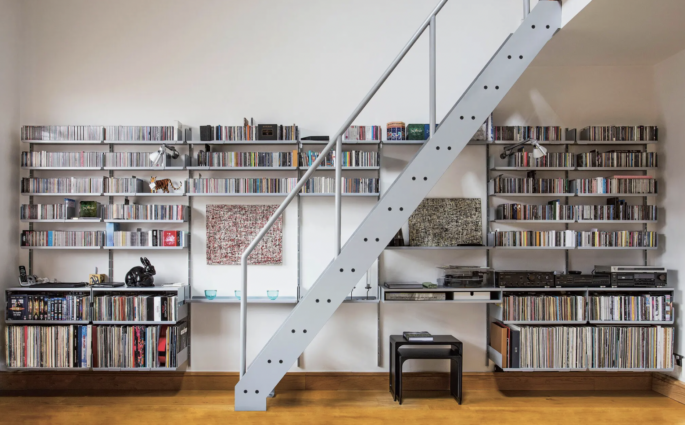
A more elaborate configuration of the 606 Universal Shelving System.Credit…© Vitsoe
8. Faye Toogood, Roly-Poly Chair, 2014
Faye Toogood’s Roly-Poly chair, which debuted in 2014 as part of a collection of similarly rotund fiberglass furniture titled Assemblage 4, isn’t just a seminal piece of design — it’s also got a sense of humor. The key lies in the contrast between its jolly, potbellied seat, evocative of a cartoon animal, with four squat, cylindrical legs, and the confident way it occupies space.
The chair is a corporeal symbol of maternal strength; Toogood, a multi-hyphenate British clothing and interior designer, has said that the roundness was inspired by her pregnancy.
(“I’ve got fat,” she told an architecture magazine upon the chair’s release.) Indeed, it’s the kind of perch that makes you never want to get up, to relinquish your vanity and drop into a state of permanent comfort. With no hard edges, it’s both cleverly child-safe and endlessly imaginative, conjuring bubble letters, elephants and balloons. But although the Roly-Poly grew out of the designer’s experience with her changing body, it offers something more universal: a softer, more whimsical take on minimalism, which in recent years has turned away from sharp-cornered austerity toward the more organic silhouettes of the circle and the arch. — R.C.
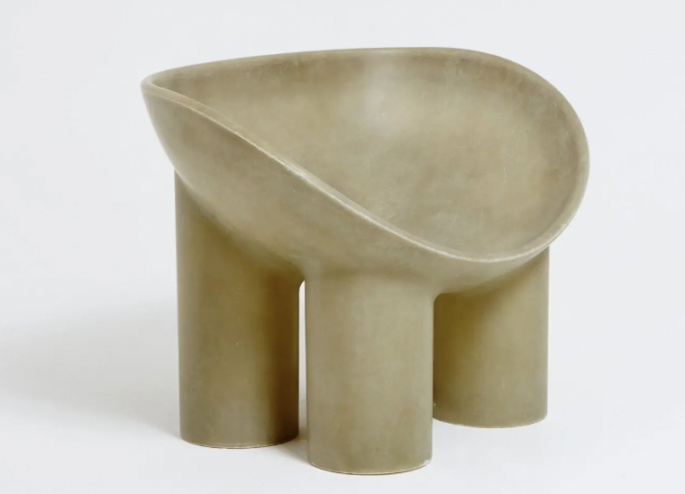
Toogood’s Roly-Poly chair in raw fiberglass.Credit…Courtesy of Faye Toogood
9. Unknown, but Possibly Jean-Michel Frank; Parsons Table; Circa 1930
Some pieces of furniture are so unobtrusive and chameleon-like that they hardly feel designed. Such is the case with the Parsons table, whose defining feature is its ratio: No matter the table’s size, its legs — which stand flush with the corners of its surface — must always be equal in width to the thickness of its top. It’s thought to have emerged from a design project completed in the early 1930s at the Paris satellite of New York’s Parsons School of Design, the result of an assignment often attributed to the aristocratic French decorator Jean-Michel Frank, who was a lecturer there at the time. (The American designer Joseph B. Platt is also often cited as having a hand in the piece.) Known for creating magisterial spaces for the fashion designer Elsa Schiaparelli and the composer Cole Porter, Frank put aside his usual interest in such sumptuous materials as shagreen and obsidian, challenging the students to design a table so elemental that it would retain its basic character and integrity regardless of finish. — R.C.
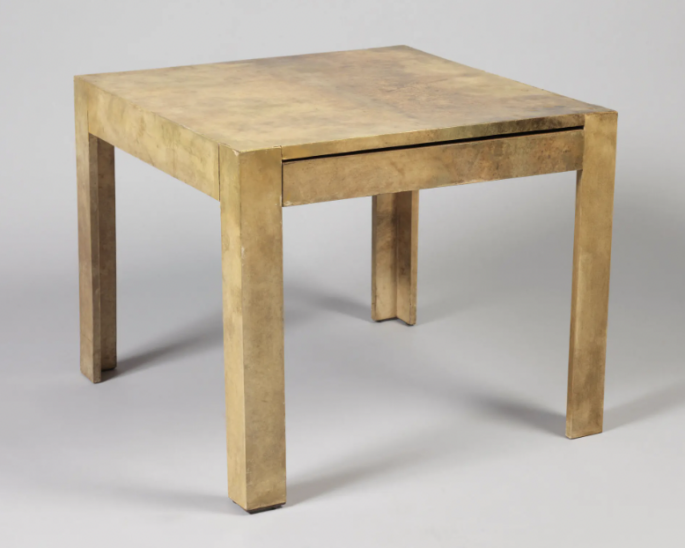
The Parsons table, circa 1936-40.Credit…Ellen McDermott © Smithsonian Institution
10. Ettore Sottsass,Ultrafragola Illuminated Mirror, 1970
Although the Italian architect and designer Ettore Sottsass’s undulating electrified mirror, which emits a dusky pink glow, predates social media by four decades, it somehow anticipated the age of the selfie. Sottsass, who would in the 1980s spearhead the madcap Milan-based collective known as the Memphis Group, crafted it as an apparent tribute to womanhood — its ripples supposedly reference flowing hair and body curves. Such an idea may now seem a study in objectification; nonetheless, the mirror’s enchantments are undeniable, as proven by its vibrant second life on social media. The musician Frank Ocean and the model Bella Hadid are among those who’ve captured themselves, like modern-day Narcissuses, in its reflection. The appeal is obvious: It’s seductive, flirtatious and lighthearted — décor as an antidepressant in troubling times. Perhaps Sottsass himself best explained why the glowing, flowing mirror is universally beloved. “When I was young, all we ever heard about was functionalism, functionalism, functionalism,” he once said. “It’s not enough. Design should also be sensual and exciting.” — Max Berlinger
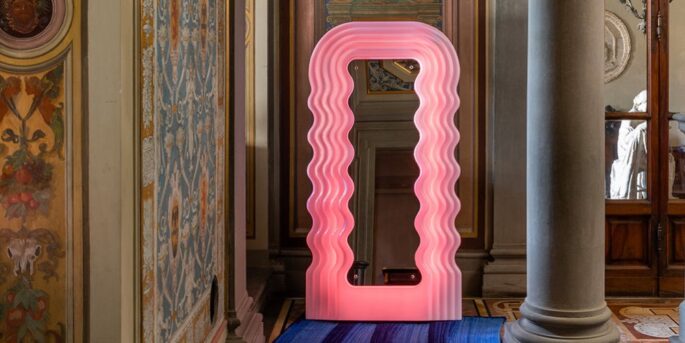
Ettore Sottsass’s Ultrafragola mirror illuminates a Sofo rug by Superstudio, a rule-breaking Italian design collective founded in the 1960s.Credit…Serena Eller Vainicher
11. Margarete “Grete” Schütte-Lihotzky; Frankfurt Kitchen, from the Ginnheim-Höhenblick housing estate; 1926-27
In the aftermath of World War I, Frankfurt, Germany, responded to a growing housing crisis with a sweeping civic effort centered on affordable and modern public residences. The Austrian architect Margarete “Grete” Schütte-Lihotzky, a radical-minded proponent of Red Vienna’s social-democratic reforms who designed apartments for single working women, and, with the architects Adolf Loos and Josef Frank, complexes for veterans and the disabled, was tasked with developing kitchens for these New Frankfurt apartments. In planning her fitted kitchens, Schütte-Lihotzky, who lived until the age of 102, aimed to create something hygienic and dignified for the urban working class. She consulted labor-efficiency studies, interviewed housewives and women’s groups and took inspiration from the rigorously efficient galley kitchens of railway dining cars. The result was a space equipped with innovations such as a gas stove, built-in cabinetry and a tiled backsplash. The room was small by today’s suburban standards — 13 feet long by 7 feet wide — but Schütte-Lihotzky’s vision helped pioneer the notion of today’s kitchen as the center of domestic life. — M.L.
12. Billy Baldwin, Slipper Chair, 1950s
Until the 20th century, what we now call the slipper chair was a private affair, a boudoir staple of Victorian-era excess with an armless seat to accommodate the wide petticoats and corset-bound women unable to bend over. But in the 1950s, the American decorator Billy Baldwin yanked the chair with an overstuffed profile out of the dressing room and got it ready for cocktail hour. He threw out the brocade jacquard and flouncy trim for something more clean-cut and modern; the low-to-the ground, high-backed seat became sheathed in a pleated skirt or tight slipcover tailored straight to the floor. (Baldwin believed that too many naked chair legs made a room “restless.”) Still, it didn’t completely escape its beau monde past. Baldwin’s clientele included the likes of socialites Jacqueline Onassis and Nan Kempner. For Diana Vreeland, he designed a slipper chair in a clashing print to complement the fashion editor’s scarlet chintz “garden in hell” room in her Park Avenue apartment. About his stump-legged rejoinders to Continental refinement, Baldwin once said, “We can recognize and give credit where credit is due, to the debt of taste we owe Europe, but we have taste, too.” — Max Lakin
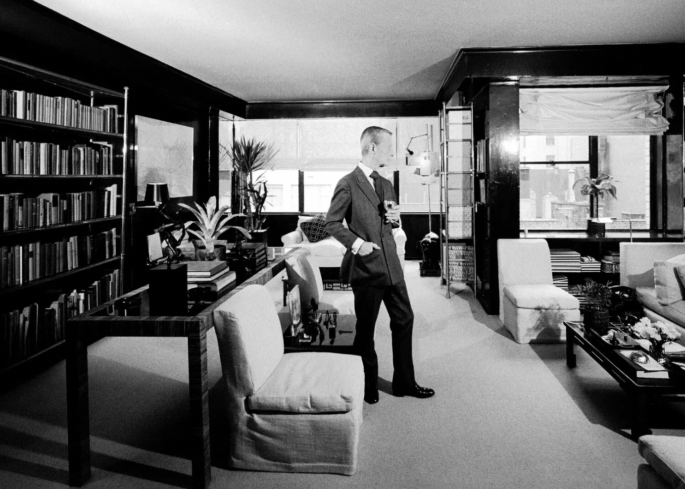
Billy Baldwin, photographed with his slipper chairs at his New York City apartment by Alfred Eisenstaedt circa 1974.Credit…Alfred Eisenstaedt/The LIFE Picture Collection/Shutterstock
13. Ayse Birsel and Bibi Seck, Madame DakarSofa, 2009
When Patrizia Moroso, the creative director of the Northern Italy-based family furniture company that bears her last name, commissioned a show dedicated to the creative prowess and craftsmanship of Africa, a continent that had been historically overlooked by the Western design world, among the works that seized the imagination was theMadame Dakarsofa. Boldly graphic and rendered with both an eye to the future and reverence for the past by the designers Ayse Birsel and Bibi Seck, who split their time between New York, Paris and Dakar, it contributed to the current interest in African design and technique as well as a mania for Afrofuturism. Made in Moroso’s facility in the West African nation, the hand-woven indoor-outdoor piece is constructed by stringing the plastic threads used in fishing nets — in reference to Senegalese traditions — into a herringbone pattern, which is then slung like a hammock over thick, splayed steel legs. — M.B.
14. Philippe Starck, Louis Ghost Chair, 2002
Modern design in Europe and the United States was largely a reaction to the ostentation that came before it, particularly among royalty and other privileged households. One hallmark of the frilly old style is the Louis XV/XVI Medallion armchair, named for the 18th-century French monarchs with whom it found favor. More than 200 years later, the French industrial and interior designer Philippe Starck developed his version from a single mold injection of liquid polycarbonate, which hardens to a clear, lightweight and durable Plasticine material also used in cars and fighter jets. Although he eliminated the Medallion’s decorative elements, Starck retained its voluptuous profile, neither conforming to nor fully departing from the expectations of contemporary design. — Evan Moffitt
Considered a cabriolet due to its rounded concave backrest and open armrests, it was much lighter than the close-sidedbergère.
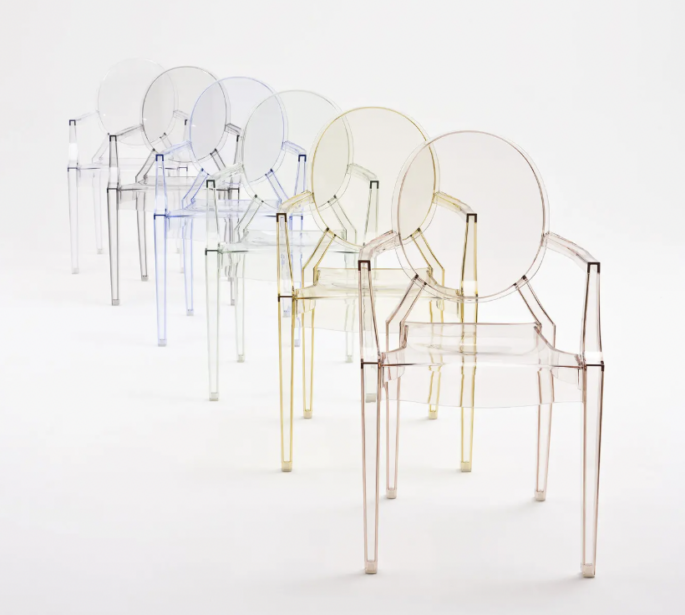
In addition to a completely clear version, Starck’s chair comes in black, white and five transparent colors.
15. Unknown, Monobloc Chair, 20th Century
Design history is lousy with icons — this iconic sideboard, that iconic zoomorphic torchier — and many of them live on as “authorized” reproductions, costing thousands of dollars, while the rest of us make do with mass-market dupes. The monobloc chair is the antidote to such design idolatry: a single piece of extruded white plastic, immune to trend and cultish adoration. With a barely verifiable history, it’s both the original and the imitation, and costs very little to produce. To make a chair out of just one piece of material is something of a design Holy Grail, one that became more attainable around midcentury with advancements in plastics technology. Early mass-produced chairs — including Verner Panton’s Panton chair and Vico Magistretti’s Selene — were all a bit too polished or Space Age-y to achieve ubiquity. The French engineer Henry Massonnet’s Fauteuil 300, from 1972, is often credited as the closest source for what we now call the monobloc, though it, too, is more refined than the standard issue. (There’s also a credible claim that Canadian designer D.C. Simpson created an even earlier version in 1946.) Depending on where you land on the affordability sustainability axis, monoblocs are either a triumph of democratic design or a mess of disposable mass consumption — the red to-go cup of chairs. Either way, it’s often spoken of as the most widely used piece of furniture in the world; the Zelig of plastic chairs, it shows up at both Biloxi cookouts and roadside bars on the outskirts of Jakarta. With zero adornments except for its flared legs and fanned seashell back, it cannot be called beautiful, though it is familiar, and for some people, that can have the same pleasing effect. — M.L.
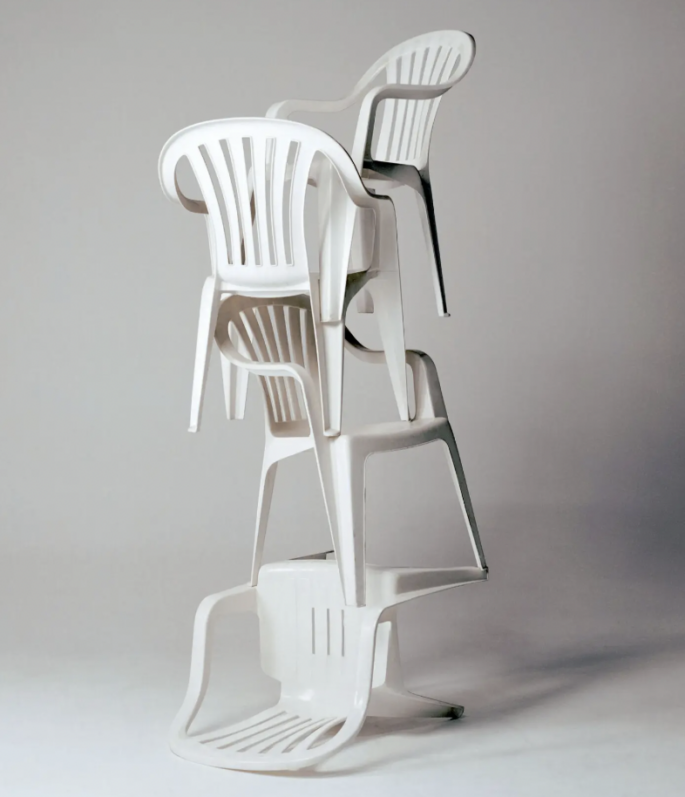
Perhaps the world’s most ubiquitous chair, the monobloc is made of a single piece of plastic.Credit…Joosep Kivimäe
16. Piero Lissoni, Extrasoft Sofa, 2008
Conceived in 2008 for Living Divani by the brand’s creative director, Piero Lissoni — who has also designed for Kartell, Cappellini and the kitchen maker Boffi, among others — the Extrasoft embodies several of the design trends of the last half-century in a single object: the move toward simple geometry; furniture that sits ever closer to the ground; and the profusion of squishy, somewhat overstuffed forms. But the sofa’s defining feature is its modularity, a distillation of earlier experiments in sectional design, including Mario Bellini’s bulbous Camaleonda (1970) for what was then known as C & B Italia (now B & B Italia) and Hans Hopfer’s vibrantly patterned Mah Jong (1971) for Roche Bobois. With irregularly sized orthogonal sections that connect via hidden hooks, it can be configured into a multitude of shapes; it’s as much interactive art as it is furniture. And because its orientation is largely horizontal, the Extrasoft can spread through almost any space, providing places to recline, socialize or sleep, recalling a giant platform bed or those sexy conversation pits of the 1970s. — K.G.
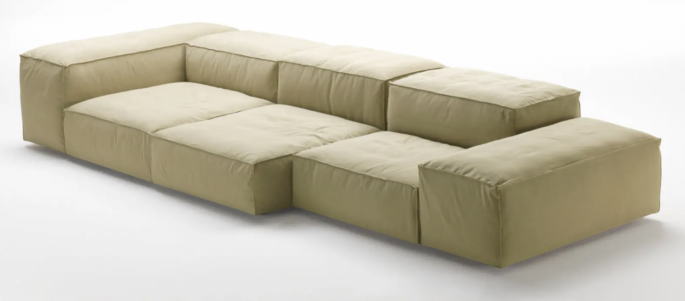
Piero Lissoni’s Extrasoft sofa from 2008.
17. Verner Panton, Vilbert Chair, 1992
The term “flat-packed” might trigger traumatic memories of trying to assemble furniture with puzzling instructions and a flimsy Allen wrench; one thing it doesn’t conjure is cutting-edge interiors. But by the 1990s, Ikea had partnered with a number of top designers, including the Danish master Verner Panton, who created this gravity-defying confection. Made from medium-density fiberboard (MDF) with a melamine coating, a material often used by the Swedish company, Panton’s chair has obliquely angled back and leg panels, held together with screws, that hardly seem strong enough to stand up on their own, much less accommodate a human body. Here, Panton, best known for his space-age designs, including the S-shaped Panton chair — fabricated in 1967 using a tongue-like piece of molded plastic — and his hallucinogenic interiors for hotels, restaurants and private homes, did the unexpected: He embraced hard edges, even if only as a matter of practicality. (Imagine, for instance, flat-packing his amorphous Living Tower, a more than six-foot-high upholstered seating apparatus from 1969.) The Vilbert stands as a homage to the Zig-Zag and Red Blue chairs by the early 20th-century Dutch de Stijl movement designer Gerrit Rietveld, as well as to the tinker toy aesthetic of the 1980s Memphis Group, its influences spanning about 50 years of candy-colored geometric dreams. — E.M.
18. Clara Porset, Butaque Chair, Possibly 1930s
“Butaque,” the Mexican name for the low, inclined J-shaped wooden lounger prevalent in parts of Latin America, refers to a shape originating in the 16th century, a colonial-era cross between traditional Spanish hip-joint armchairs and pre-Columbian duhos — often hardwood ritual seats used within Indigenous Taino Caribbean culture to commune with deities. (Thomas Jefferson was obsessed with them, conscripting enslaved carpenter John Hemmings to produce reproductions for his plantation.)
In the early 19th century, the Mexican port city of Campeche was a locus of butaque production and the chair’s main exporter to the United States.
The interior and furniture designer Clara Porset, born into a wealthy family in Cuba and educated in New York and Paris, may have begun making her butaques after emigrating to Mexico in the mid-1930s as a political exile for her participation in the Cuban resistance. Porset reinterpreted the butaque through a Bauhaus lens (she studied under Josef and Anni Albers, practitioners of the movement, at Black Mountain College in North Carolina), designing numerous iterations in local materials, including mahogany, wicker and leather, and reducing the structure to its essential form. Porset’s circa 1957 Modernist reinterpretation of the butaque is her most enduring design, a sinuous shape in laminated wood and woven wicker, with a high-backed seat balanced on half-moon legs. The Mexican architect Luis Barragán commissioned several versions; Albers, also enchanted with Mexican aesthetics, produced an interpretation of his own.— M.L.
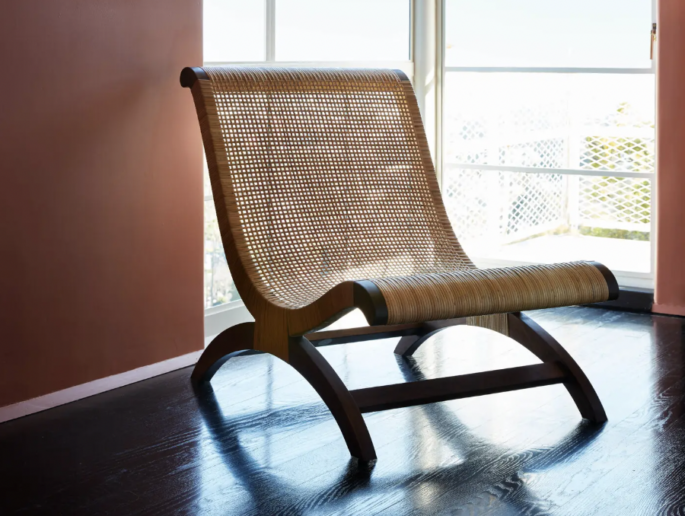
A 2020 re-edition of a Porset Butaque Clasica for Luteca.Credit…Stephen Kent Johnson, courtesy Luteca
19. Yayoi Kusama, “Accumulation No. 1,” 1962
Can an armchair be sexual? Funny? A feminist manifesto? In the hands of the Surrealist Japanese artist Yayoi Kusama, the answer is a resounding — and perplexing — yes. Her fabric sculpture is furniture reimagined through a provocateur’s lens. Covered in exploding clusters of hand-sewn stuffed tentacles, which Kusama has described as phalluses, “Accumulation No. 1” was constructed in her downtown New York loft, in the same building that housed the studio of her friend the Swedish American sculptor Claes Oldenburg. The chair also seems to have anticipated the strange eroticism of the Comme des Garçons designer Rei Kawakubo’s spring 1997 “lumps and bumps” collection 35 years later. Tapping into Kusama’s themes of repetition and whimsy, the peculiar creation originated from a more serious impulse: “[I] began making penises in order to heal my feelings of disgust toward sex. Reproducing the objects … was my way of conquering the fear,” she once said. It’s also been read as a taunt lobbed at the male-dominated art scene of the era and the ultimate subversion of a domestic object by a female artist: an armchair overrun with limp penises. — M.B.
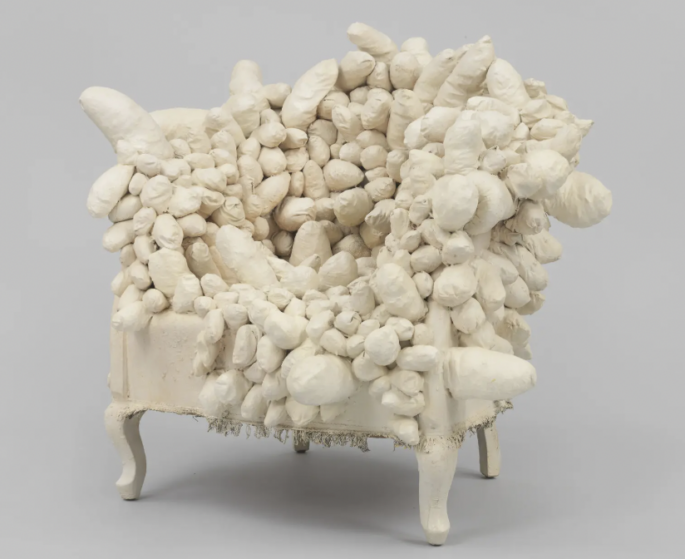
This “Accumulation” chair from 1963 began as a wooden frame, and was covered with sewn and stuffed pieces of fabric Kusama has referred to as “phalluses.”Credit…Whitney Museum of American Art, New York. © Yayoi Kusama
20. Hella Jongerius, PolderSofa, 2005
In an industry that prizes sober sophistication, the Dutch designer Hella Jongerius’s Poldersofa is a clever rebuttal: a monumental piece that’s proudly imperfect, flaunting its faults as virtues. Or, as this publication noted in 2009 — while acknowledging the paradox of the couch’s exquisite construction with its funky aesthetic — “[We] feel as fondly toward it as we would a shabby old sofa.” Its squared-off cushions in varying sizes and uneven backrests upholstered in gradations of earthy colors (clay-like reds, mossy greens, oceanic blues) are interesting from every angle, tufted with kooky, often subtly mismatched buttons of mother-of-pearl, horn or wood. Named for a low-lying system of fields in the Netherlands that have been reclaimed from the sea by dikes and drainage canals, the Polder is a love letter to Jongerius’s verdant homeland and its ingenious natural engineering, but it’s also a paean to the comforts of domesticity and the beauty of everyday life. — M.B.
21. Charles and Ray Eames, Side Chair, 1952
Few designers evoke postwar American modernism — and optimism — better than the husband-and-wife duo Charles and Ray Eames, who lived and worked in Los Angeles. During World War II, the couple used plywood plies to develop new splints for the Navy, refining molding techniques they later applied to domestic designs, including the Side Chair, a simple shell mounted on an Eiffel Tower lattice of wire spindle legs. At once biomorphic and industrial, the Side Chair is now endlessly cribbed and reinterpreted, showing up in high-end restaurants and Brooklyn townhouses. Originally a molded piece of fiberglass that came in shades of gray, it’s now fashioned in postindustrial recycled material. Perhaps more than any other Eames piece, it fully expresses the couple’s animating principle: slightly goofy but still disarmingly elegant. — M.L.
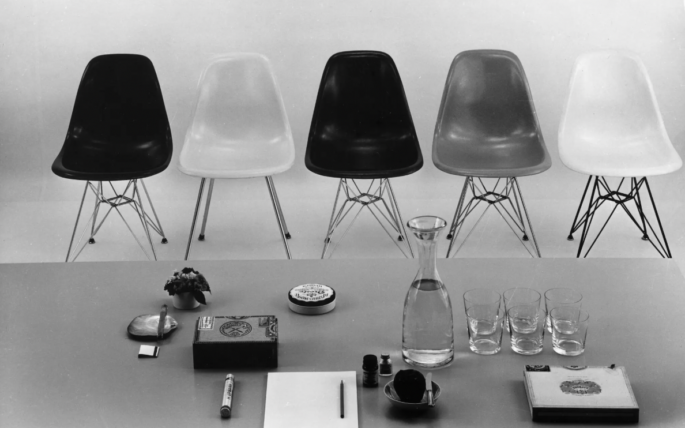
A row of Side Chairs photographed for a 1950s advertisement. Credit…© Eames Office, LLC. All rights reserved
22. Nanda Vigo, Due Più Chair, 1971
The Milanese artist, architect and designer Nanda Vigo helped usher in the disco era with this chair, originally manufactured for the Italian furniture company Conconi SNC/More Coffee. While its chromed iron or brass tubing evokes Bauhaus functionalism, the cylindrical, fur-covered seat and backrest, not unlike the giant rollers that provide polish at a carwash, give it a touch of Pop Art kitsch. Vigo, who founded her studio in 1959 after spending time in Switzerland and the United States, was inspired by science fiction and the style codes of the burgeoning aerospace industry, as immortalized in Stanley Kubrick’s 1968 film, 2001: A Space Odyssey. She also became known for her fur-lined conversation pits and staircases, like the ones she installed in the 1960s in the poetically named Lo Scarabeo Sotto la Foglia (the Beetle under the Leaf), a private residence in northern Italy. On the Due Più, the material adds a softer touch to the hard-edge minimalism of Vigo’s contemporaries, with results that are undeniably groovy. — E.M.
23. Alvar Aalto, Stool 60, 1933
With three L-shaped legs and a childlike disk seat, the startlingly simple Stool 60 encapsulates the design ethos of the Finnish designer Alvar Aalto. The result of a partnership between Aalto — fresh off his work on Paimio Sanatorium, a triumph of 1930s Functionalist architecture — and the carpenter Otto Korhonen, it represents their first experiment together with what would become an emblematic technique: They sliced fissures into pale birch slats, softened them with heat and water and then filled each gap in the wood with a timber strip dipped in adhesive. They then bent the assemblage at a 90-degree angle, creating sinuous yet sturdy curved supports. The stool’s impact can be seen not only in the innumerable ways it’s in dialogue with its environment — a place to sit or a small side table, it can be stacked into an elegant column to be stored — but in its playful execution as well. Unsurprisingly, it’s been in continual production, and has been deeply influential: Ikea’s Frosta was widely considered to be an offshoot, and the streetwear brand Supreme collaborated with Artek on a 2017 version with a checkerboard motif. — M.B.
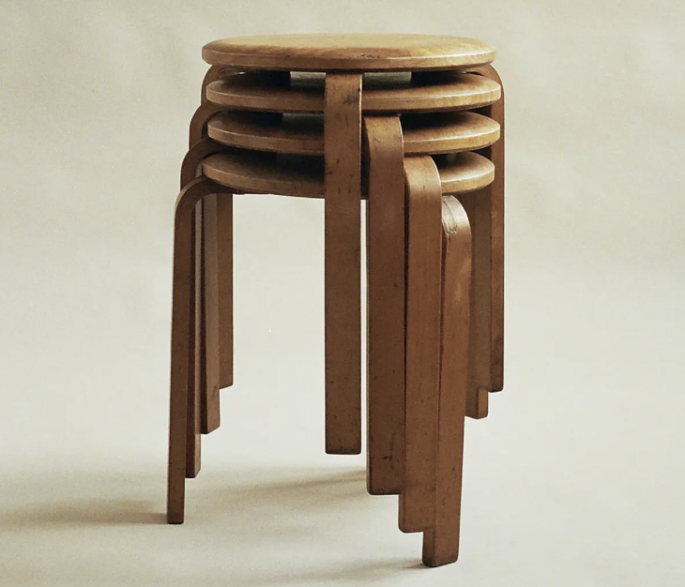
A stack of Stool 60s in their original birch.Credit…Ruby Woodhouse for Abel Sloane 1934

